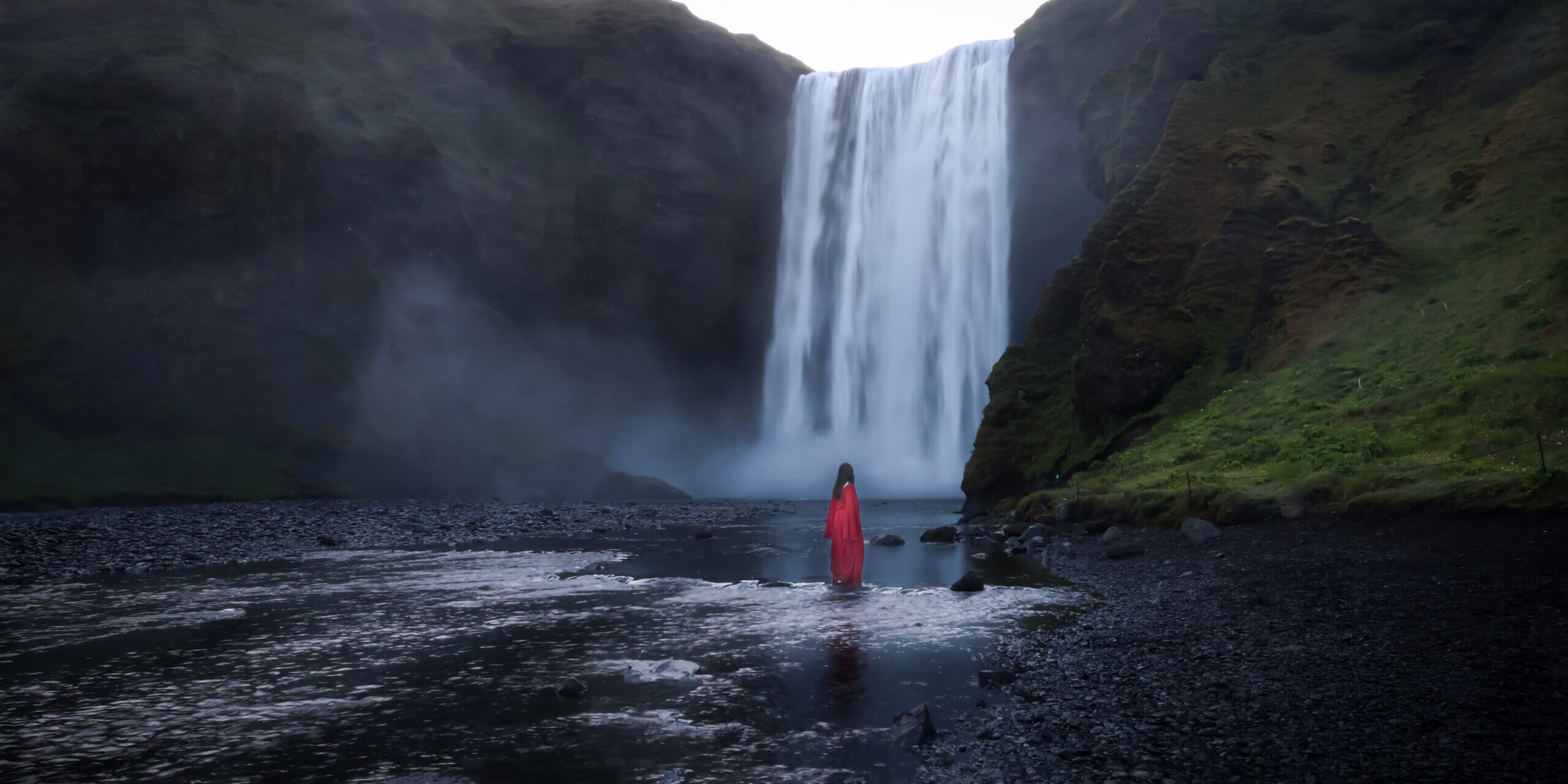How to tell a story using light, scale, and action to encourage a viewer’s imagination
Something called to her in sleep. It whispered of times long forgotten; of rolling hills, mysterious gorges, and a river which roared to life beside her. In a dream, she journeyed until she found this place where clear waters flowed across lava stones and the cool mist rose above the cliffs. Between them, a waterfall roared, and she realized then who beckoned her.
This excerpt describes what inspired my photograph “Sleepwalking,” taken at Skógafoss in Iceland. It was a scene I had envisioned on my many solo nights standing before it.
Storytelling in photography is one of my favorite parts about taking pictures. There are many ways an image can tell a story, whether it’s through light, action, scale, or tone, but it all begins with the imagination of the person behind the lens.
Here are a few of my favorite ways to tell a story in photography using light, scale, and action.
How my daily walks inspire me
Imagination is something I was fortunate to have developed as a child. I spent most of my youth outside, playing in nature, naming the rocks and bugs I found, or personifying trees. Bestselling author Stephen King talks about how integral his daily walks alone have been to his process. Its on these walks that the author has had some of his best ideas and has even able to solve plot problems in his ongoing works.
I applied the same idea to my art residency this past spring in Iceland, and what I discovered was remarkable!
This past spring, I attended an art residency on Hrísey, a small island in North Iceland.
Every day in the morning and again at night, I would set off on a walk. The path I chose varied with my mood, but I often felt called to the sea cliffs where the waves crashed and the salty air tinged my senses. On occasion, I would wander north to the lighthouse and stare out at the Arctic, mesmerized by the endless pink horizon at sunset.
Some days it would snow, and on others the sun shone so bright that the fjord glittered like diamonds. It was a slower pace of living, filled with creativity, endless inspiration, and long nights chasing the Aurora. I never grew bored of Hrísey, and I was certain this little island opened a creative channel for me that I had once touched upon as a child, playing with sticks and rocks outside or watching the field mice by the pond.
My imagination flourished, and I journaled my ideas. I feared that when I returned, life would be dull. Instead, the opposite happened. I saw beauty in places I had never seen before: the green leaves, the forest canopy, and the summer lantern bugs. Every day, I would head out with my camera without a plan, but then something changed. I began to think about compositions differently, not from a “what will make a great photo angle, “ but “what feeling do I want to evoke in this photo?”
My eyes opened with new wonder during hikes and walks, searching for that perfect light or tree to fulfill my photographic stories. I noticed a change in my photography and in my skills. No longer was I intimidated by light and editing, but excited about the process and possibilities. A whole new world had opened, changing my approach to photography and the creative process forever.
I learned new skills to achieve what I wanted, and journaled about others I wanted to learn.
Whether it’s landscape, wildlife, or a client shoot, my process begins with asking myself: What story do I want to tell?
Using light to tell a story
Light is one of the best tools we can use to influence an image. Whether it’s natural or artificial, mastering light is one of the most sought-after skills in photography.
When it comes to natural light, we chase golden hour, that magical time before sunrise and sunset when the light is just right to create that soft glow, which enhances our photographs. The photograph of the Atlantic puffin was captured during golden hour on Grimsey Island in Iceland.
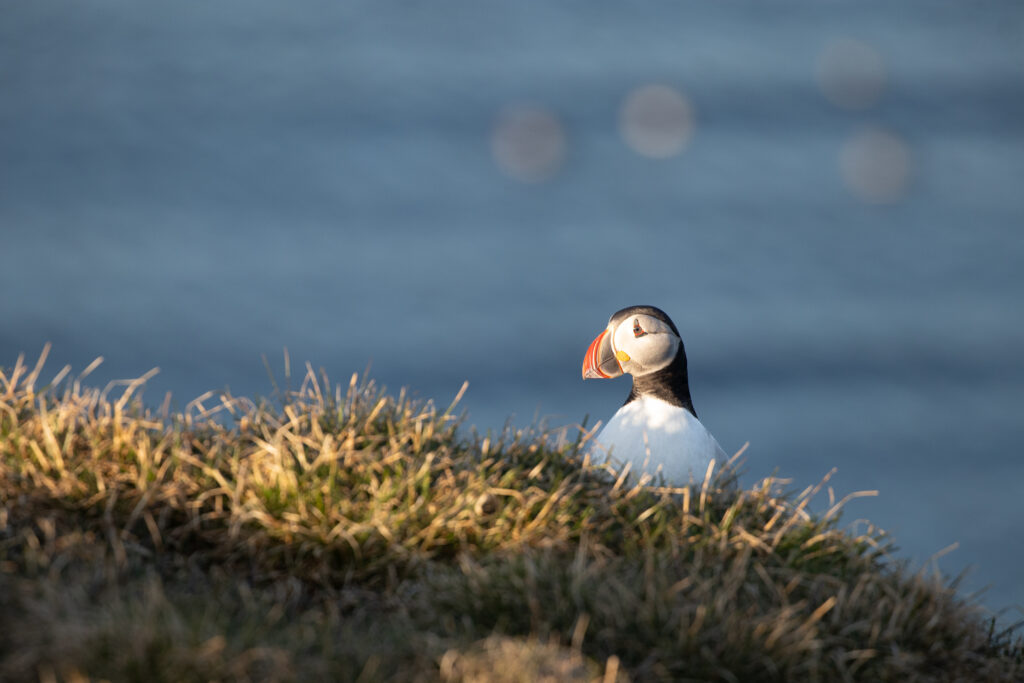
I used the direction of the light relative to the puffin’s direction of facing. I purposefully included the golden shimmers on the water and grass in the negative space to add interest to the photo and set the scene.
In the photo below, “Meeting the Ancients”, I had hardly any natural light to work with. I found this tree a year ago on a daily walk, and it stuck with me for its mystical, fairy-tale vibes.
The fog was heavy this morning, and the sun’s rays filtering through the forest seemed not to be happening. Instead, I worked with the mist, feeling it would enhance the mood of this photograph when paired with this twisty old tree.
I included the lamp to add interest to the picture and the idea that the scene was taking place during a misty, moody time in the forest. Edits to add light were then performed in Lightroom using the brush tool, including adding some lighter touches on the dress to add dimension.
The puffin photograph had very little editing done to it because I was able to capture what I wanted with the natural light. The tree photo however required more editing in Lightroom to achieve the story I envisioned when setting out that morning.
Two photographs taken under very different circumstances with two very different stories to tell. Both were achieved with light.
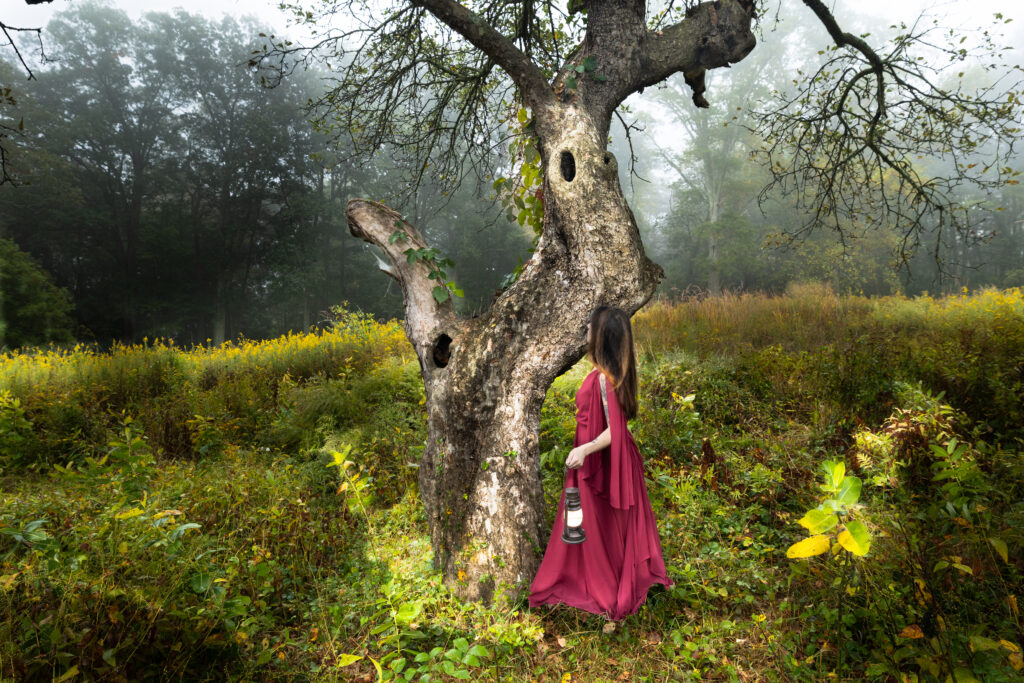
Using scale to tell a story
When it comes to Iceland’s larger-than-life landscapes, I love using scale to showcase their grandeur. The best way to do this is by adding a subject, and in this case, I use myself to show what the popular Skógafoss waterfall in Iceland is like.
For this shot, I had envisioned a photograph that conveys the dreamy feel of this waterfall, as if the subject were sleepwalking into another world. I decided my red dress would not only provide a pop of color on the black pebbled ground but also add to this otherworldly scene. I know if I were to sleepwalk into a fantasy world, I would at least want to be dressed up for the occasion!
The idea came to me when I thought about the many nights I had stood in front of this waterfall alone, mesmerized by its power and beauty. My imagination took me to a scene just like this, where perhaps the waterfall is a portal to another dimension of dreams and desires.
For this scene, I used a tripod to steady the camera during the long exposure. I wanted to achieve a slightly dreamy look to the water. I utilized a remote shutter on a timer. Skógafoss, like many easily accessible waterfalls in Iceland, is crowded during the day. I scheduled this shoot during the midnight sun season and arrived around midnight to set up.
The shoot itself, from setup to finish, took about 45 minutes and may have gone quicker if a few lingering tourists weren’t around. I didn’t want to be a photo hog, so I made sure to move my tripod out of the way when others wanted a photo opportunity.
Some things to keep in mind with landscape photography in Iceland:
- Iceland can get CRAZY windy. My carbon fiber travel tripod didn’t stand a chance one night at Godafoss. Be prepared to secure your tripod or travel with a heavier option.
- The spray from the falls will travel even further in the wind so come prepared with a wiping cloth for your lens.
- Popular spots can get crowded. Be prepared to travel at night during the midnight sun season if you want to avoid crowds and enjoy the gorgeous light.
- If you are using a subject, consider the colors they will be wearing and how that pops in the landscape. I purposefully pack yellow, red, or white jackets for Iceland because they pop against the landscapes there.
- Many locations in Iceland are now banning drone use. Please keep local drone laws in mind when flying. Iceland now requires you to register your drone before flying it. Don’t be that one jerk flying a drone over people’s heads or near nesting sea birds. Keep in mind, due to the wind, you may not be able to fly at all. I often get the question, Is it worth bringing my drone to Iceland? Honestly, I don’t know. I am a licensed drone pilot who has flown my drone in Iceland and taken some beautiful shots; however, I now enjoy traveling lighter, and I think a good wide-angle lens and your imagination can do just as good a job!
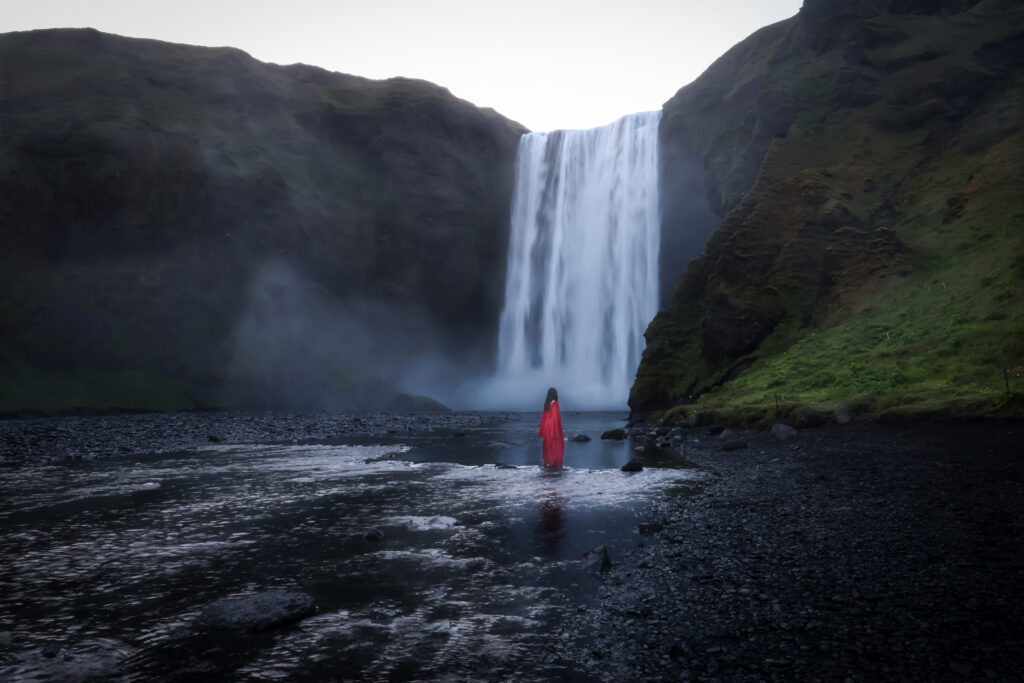
Using action to tell a story
Besides light and scale, another way to tell a story in photography is action. This is especially useful in wildlife photography, where an action shot can showcase behavior and set the scene for a good story. An action photograph does not have to be dynamic to be impactful.
For example, this photograph I took of a juvenile red fox taking a step forward won an award! I loved the picture because it captured this adorable kit looking curious and taking action to investigate. This image (like many of my wildlife-in-action photos) was not planned. I was photographing the family when this little one decided to head in my direction. I quickly adjusted my shutter speed and captured this image mid paw strike!
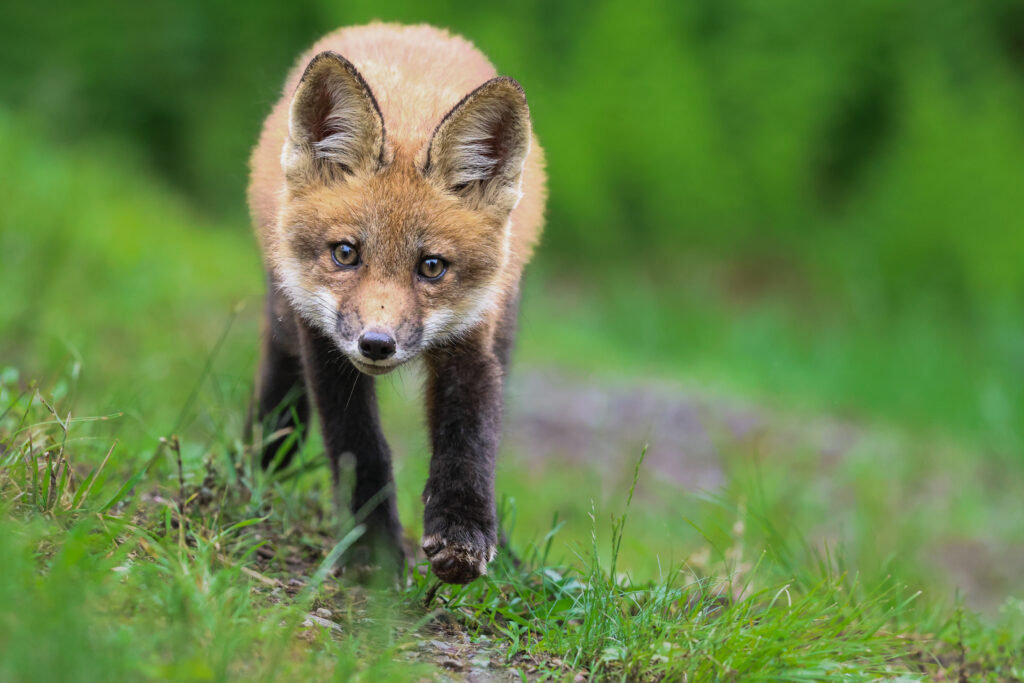
Another example of an unplanned action shot is this White Wagtail on Westman Island, Iceland. This beloved local showed up during golden hour when I was waiting for another favorite to swing by, the Atlantic Puffin. It happened to land on a grassy knoll that was facing the light, setting the scene for a perfect action shot that I titled “Tiny Dancer.”
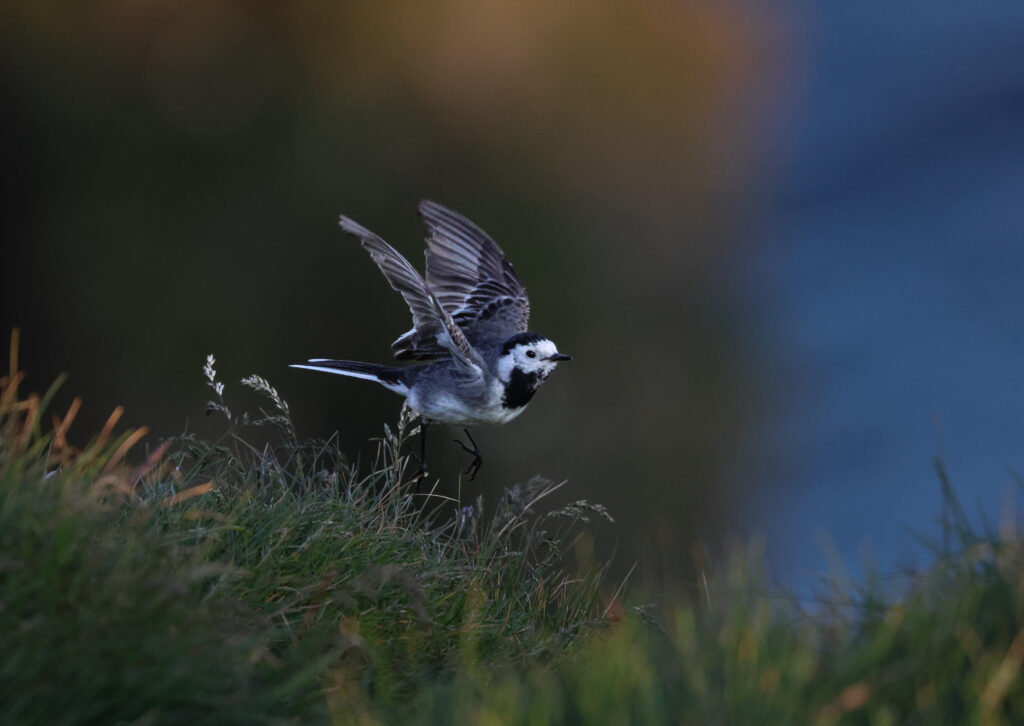
Tips
- For action shots, you will need a fast shutter speed, upwards of 3200-4000, in the case of small birds such as hummingbirds and this White Wagtail. Don’t be afraid to play with shutter speeds, and remember to adjust your aperture to let more light into the frame.
- The toughest case is photographing wildlife in low-light conditions. A fast shutter speed means less light into the lens. This has been one of my most challenging situations when photographing Arctic foxes in the late day on white snow. If your goal is to tell a story with your photography, remember to think outside the box. Include the environment, adjust your settings, and hit the shutter! I remember taking a picture of a seal emerging from the fjord with a fish in its mouth. It wasn’t a great photo due to the conditions and camera shake from the wind, but a fellow photographer said to me, “At least you got the shot!” So when all else fails, a good story is still a good story, whether you took the perfect crisp photo or not, at least get the photo!
- Don’t be afraid to fail. My camera suffered considerable damage in Iceland during a storm. I had the opportunity to photograph flying puffins, but my autofocus wasn’t working. Now I had a decision to make: leave without taking any photos, or try my best to get one! For three hours, I crouched on the sea cliffs doing my damndest to get a picture of a flying puffin without auto focus. I managed to get a handful of decent photos, and in the end, the whole experience made me a better photographer and was unforgettable!
- Don’t wait for the right conditions. Yes, golden hour is ideal for light and all that, but there is no such thing as bad conditions for photography. Our world has all kinds of light, and our subjects exist in all of it. Get out there whenever you can and capture it all. You never know what you will get!
- Journal your ideas and what you need to work on. When I have an idea, I list it. When I want to learn something, I write it down and do my research. As photographers, we should always be learning. No skill is unreachable, and everyone starts somewhere.
- Take a walk alone when you can. Bring a camera or don’t. This is your time to connect with your inner child and imagination. Find beauty in your surroundings and where you live. Some of my favorite photographs were taken just five minutes from my house with a bit of planning!
- Don’t downplay your equipment. Whatever you have, you can take great photos. Sure, a good camera, lens, and tripod help, but I took some of my favorite images on my old Canon EOS M50. When I finally upgraded to a better body and lens, I had already honed many of the skills I needed because the M50 didn’t do much for me. You can always work on composition and story!
- For night photography, it is ideal to set up before it gets dark and have an idea of the landscape, foreground, and composition before sunset. This makes the shoot and life so much easier than fumbling around in the dark.
- You should have a plan, but don’t be afraid to deviate from it. There have been times when my plan wasn’t working out for various reasons. Weather and light shifts, or something else appears that is more interesting. Don’t be afraid to bail on your plan and try something else!
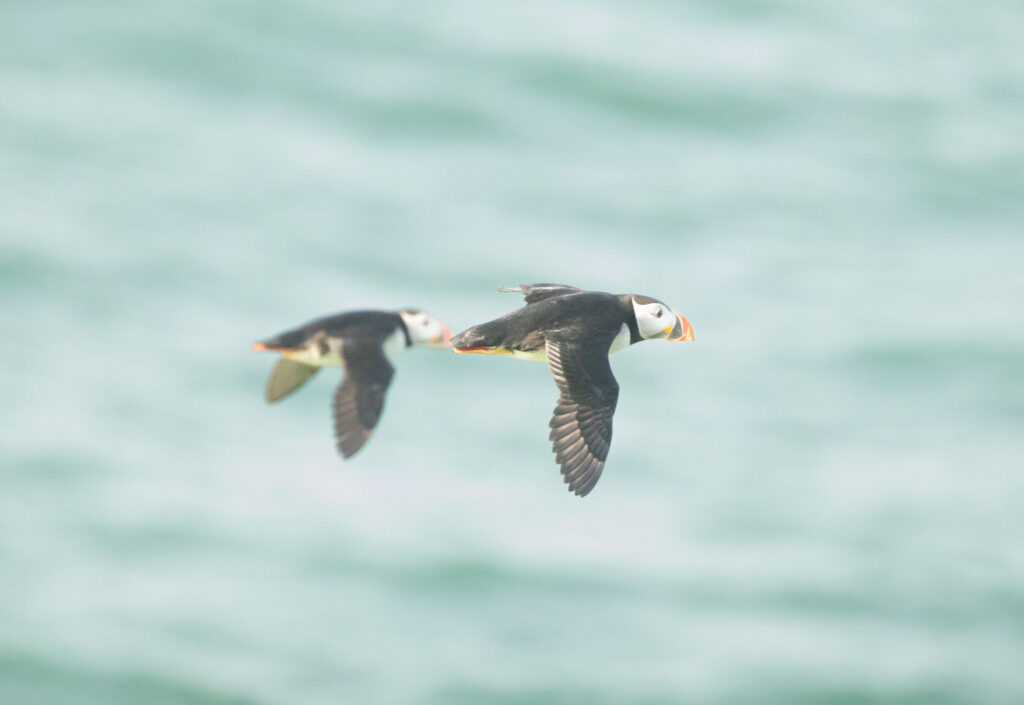
Questions to ask yourself as you compose your image
When I set out with my camera, I usually have a plan in mind. Every week, I list a few ideas for a photograph based on conditions, weather forecasts, time, and just plain interest!
One of the first questions I ask myself is what the mood of this image I want to capture is? I imagine my perfect shot and how it would make me feel when I see it. Do I want my viewer to feel peace? Inspired? Awestruck? Curious?
Then I journal ways I will achieve this image. This sometimes requires research regarding technique and editing tools. I used to dread editing. I found Lightroom so intimidating. Each week, I began teaching myself new skills in Lightroom and Photoshop, and now I love editing!
There are many days when I still set out with no plan, and there are days when I wish I had my camera, and I don’t (like the early morning walk, when I spotted two Great Horned Owls!). These days are just as important as the plan. Days without a plan encourage me to find beauty in everything, and days when I don’t have my camera remind me that not everything is meant to be seen through the lens and shared.
Regardless, the most essential part of photography is enjoying the process and loving the images you create.
Always return to the why, and for me, it is simply because I love it!

